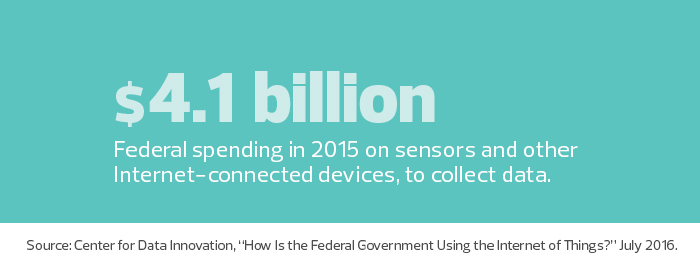sponsor content What's this?
IoT Tech Sends Agencies a Beacon from the Future
Presented by
FedTech

New Internet of Things beacon technology might be a more resilient and more accurate way for federal agencies to help track users’ location.
Amtrak passengers may soon be able to board a train and avoid long lines and the hassle of a conductor scanning their ticket via smartphone or tablet. Instead, a wireless signal would automatically acknowledge a passenger had paid as they climb aboard and search for a seat.
This seamless experience is increasingly likely as agencies experiment with beacons and the Internet of Things to improve their service.
Beacons take advantage of wireless access points to emit short-range, Bluetooth low-energy signals to mobile apps that then deliver custom, location-based content. For agencies, applications could include radio-frequency identification tags guiding federal employees with disabilities through labyrinthine office buildings or using magnetic fields to help locate emergency personnel during a crisis.
“Certainly the technologies are maturing, and there is growing industry support behind it,” says Merritt Maxim, senior analyst at research firm Forrester.
Use Beacons to Improve the Customer Experience
Take Amtrak, where Jason Werther, the senior director for digital customer experience, analytics and information management, wants to use beacons to update passengers on trains’ progress toward the station. Right now, those alerts come via a mobile app or desktop browser, but as the technology improves, Werther expects they will eventually arrive automatically through a more seamless “omni-channel experience” from Amtrak.com. That means users won’t be required to open and close apps as often or to search out Wi-Fi hotspots.

In addition, beacons could eliminate the need for passengers aboard an Amtrak to pull out tickets to prove they paid.
Instead, like air travel, workers could scan a ticket once and then, with the help of beacons, conductors could track when customers move seats.
Improve Safety via More Accurate Tracking
Amtrak also sees safety potential in the technology. In a worst-case scenario, such as a crash or derailment, “we know all the passengers on our train and where they’re sitting,” Werther says. “We know exactly where to send emergency personnel. It extends much further than just tickets.”
Greg Price, director of the Department of Homeland Security’s First Responder Technologies Group, says safety is central to his experiments with beacons as well. His group has been working with NASA’s Jet Propulsion Laboratory for about two years using a special electromagnetic field to improve its tracking of emergency responders. That technology sends and receives data on a beacon’s location that is accurate to within a meter or less. The magnetic fields also can penetrate materials and surfaces that previously made the task difficult.
Such a tool could have broad applications.

“Start thinking about concert venues, football games, political events,” Price says. “This would allow us to potentially put a transmitter on a first responder or dignitary and track their movement and whereabouts in a very populated environment. Or it may allow us, from a law enforcement perspective, to accurately know where all the law environment assets are in a crowd. This is kind of a revolutionary breakthrough.”
As beacons become more ubiquitous and less expensive, Maxim believes the technology will become more commonplace at agencies.
“Costs will continue to go down, making it cheaper, and performance will improve, which will make it important for forces that are often budget-strapped,” he says. “Technology that might have seemed out of reach economically a year or two ago no longer will be.”
This content is made possible by FedTech. The editorial staff of Nextgov was not involved in its preparation.


